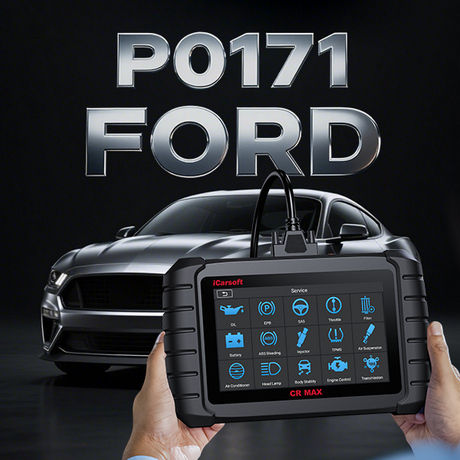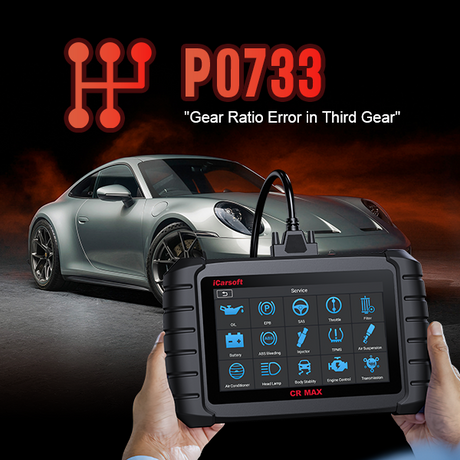Table of Contents
- 1. What’s Behind That P0340 Code on Your Dashboard?
- 2. Spotting the Signs of a Camshaft Sensor Problem
- 3. Digging Into What’s Causing the Trouble
- 4. How I Diagnose This Issue Like a Pro
- 5. Step-by-Step Fixes to Get Your Engine Running Smoothly
- 6. Tips to Keep This Problem From Coming Back
- 7. The Tools I Swear By for Tackling Engine Codes
- 8. Your Burning Questions About P0340, Answered
- 9. Wrapping Up: Keep Your Engine Happy
1. What’s Behind That P0340 Code on Your Dashboard?
Ever had your car refuse to start on a busy morning, or maybe it stalls right in the middle of a drive? I’ve been there, and trust me, it’s frustrating. A few years back, I had a customer roll into my shop with a Ford F150 that just wouldn’t cooperate. After plugging in my scanner, up popped the P0340 code—a pesky little signal that something’s wrong with the camshaft position sensor. This tiny component, usually tucked near the top of your engine by the cylinder head, works with your car’s brain (aka the powertrain control module, or PCM) to keep the engine’s timing on point. When it goes haywire, you’re in for a rough ride—think misfires, stalling, or even a no-start situation. In this guide, I’ll walk you through what this code means, how to fix it, and how tools like the iCarsoft CR MAX can save the day.

2. Spotting the Signs of a Camshaft Sensor Problem
When your camshaft sensor starts acting up, your car won’t be shy about letting you know. Here’s what you might notice:
- That dreaded check engine light glowing on your dashboard—it’s hard to miss.
- Your engine might misfire or idle unevenly, making the whole car shake like it’s got the jitters.
- Starting the car becomes a gamble—sometimes it fires up, other times it just cranks endlessly.
- Acceleration feels sluggish, like your car’s lost its get-up-and-go.
- In the worst cases, your engine might stall unexpectedly, leaving you stranded.

These signs are your car’s way of saying, “Hey, I need some attention!” Ignoring them could lead to bigger headaches down the road, like serious engine damage. Let’s get ahead of it.
3. Digging Into What’s Causing the Trouble
I’ve seen a lot of P0340 cases in my shop, and there are a handful of culprits that usually come up. Here’s what might be throwing things off:
A Worn-Out Camshaft Sensor
Over time, the sensor can wear out or fail, sending wonky signals—or none at all—to the PCM, which throws off the engine’s rhythm.
Damaged Wiring or Connectors
Frayed wires or loose connections near the sensor can disrupt the electrical circuit, especially in older cars exposed to the elements.
Issues with the Engine’s Brain (PCM)
If the PCM isn’t processing signals correctly, it can misinterpret the sensor’s data, causing all sorts of chaos.
Out-of-Sync Timing Components
A stretched or misaligned timing chain or belt can mess with the engine’s synchronization, leading to this fault.
Oil Buildup in the Wrong Places
Dirty oil or sludge around the cylinder head can gum up the sensor, especially if you’ve skipped a few oil changes.
A Cranky Crankshaft Sensor
The crankshaft sensor works hand-in-hand with the camshaft sensor. If it’s acting up, it can confuse the system and trigger this code.
Finding the root cause takes a bit of detective work, but it’s worth the effort to avoid bigger problems.
4. How I Diagnose This Issue Like a Pro
When a customer comes to me with a P0340 code, I follow a tried-and-true process to pinpoint the problem. Here’s how I do it:
- First, I grab my trusty OBD II scanner and plug it into the car’s diagnostic port to confirm the code and check for any related issues.
- I take a close look at the camshaft sensor’s output—using a multimeter or oscilloscope—to see if it’s sending steady signals.
- Next, I inspect the wiring and connectors for any signs of damage, corrosion, or loose connections.
- I also check the PCM’s behavior, making sure it’s interpreting the sensor’s data correctly.
- Finally, I double-check the timing chain or belt alignment to rule out any mechanical issues.
Finding the Camshaft Sensor
Not sure where to look? The sensor is typically near the cylinder head, but its exact spot depends on your vehicle. I recently worked on a Ford F150, and this video below shows exactly how I located and tested the sensor—it’s a great visual guide if you’re tackling this yourself:
5. Step-by-Step Fixes to Get Your Engine Running Smoothly
Once you’ve figured out what’s wrong, it’s time to roll up your sleeves. Here’s how I’d fix a P0340 issue, step by step:
- If the camshaft sensor is shot, replace it. It’s a straightforward job—unplug the old one, bolt in a new one, and you’re good to go.
- Check the wiring harness for any damage. I’ve fixed plenty of cars by simply taping up a frayed wire or tightening a loose connector.
- If the PCM is the problem, it might need reprogramming—or in rare cases, a replacement. This one’s best left to a pro if you’re not comfortable with electronics.
- Make sure the timing chain or belt is lined up correctly. A timing light can help you get it just right.
- Clean up any oil sludge around the cylinder head. If the oil’s looking grimy, it’s probably time for a full oil change to keep things running smoothly.
Expect to spend anywhere from $50 to $200 on repairs, depending on the part and whether you DIY or take it to a shop. Labor costs can bump that up if you’re not doing it yourself.
6. Tips to Keep This Problem From Coming Back
I always tell my customers: a little prevention goes a long way. Here’s how to keep your engine happy and avoid seeing that P0340 code again:
- Stay on top of oil changes—I recommend every 5,000 miles or so to keep sludge from building up near the sensor.
- Every six months, give your engine a once-over. Check the wiring and make sure the timing components are in good shape.
- Follow your car’s maintenance schedule for replacing the timing chain or belt—don’t wait for it to slip.
- Keep an eye on related parts, like the crankshaft sensor, since they work together to keep your engine in sync.
These habits have saved me—and my customers—from a lot of headaches over the years.
7. The Tools I Swear By for Tackling Engine Codes
Having the right tools makes all the difference when you’re dealing with engine codes. Here’s what I keep in my toolbox:
- An OBD II scanner to pull codes and check live data—I use the iCarsoft CR Eagle because it’s reliable and easy to use.
- A multimeter for testing electrical circuits, like the camshaft sensor’s wiring.
- An oscilloscope to get a closer look at the sensor’s signal patterns—great for spotting inconsistencies.
- A timing light to make sure the engine’s timing is spot on.
The iCarsoft CR Eagle is my go-to because it packs all these features into one device, whether I’m working on a Ford truck or a Toyota sedan.
I’ve also put together a detailed guide on using diagnostic scanners—check it out here if you’re new to this.

8. Your Burning Questions About P0340, Answered
What does a P0340 code mean on a Ford F150?
On a Ford F150, this code points to a problem with the camshaft sensor or its circuit, which can mess with engine timing and lead to issues like stalling or misfiring.
How much does it cost to replace a camshaft sensor?
It usually runs between $50 and $200, depending on your car and whether you pay for labor. Doing it yourself can save you a chunk of change.
Can I keep driving with this code?
I wouldn’t recommend it. Driving with a faulty sensor can lead to stalling or even engine damage, so it’s best to get it fixed ASAP.
9. Wrapping Up: Keep Your Engine Happy
A P0340 code might seem like a small annoyance, but it’s your car’s way of telling you something’s off with the engine’s timing. I’ve seen how quickly these issues can escalate if you ignore them, so don’t wait. With a good scanner like the iCarsoft CR MAX and a bit of elbow grease, you can get your engine back to running like a dream. And if you’re not the DIY type, a trusted mechanic can handle it for you.
Here’s a tip from years in the shop: skipping regular maintenance is a surefire way to see this code pop up again. Keep up with those oil changes and inspections to save yourself the hassle.
Dealing with other engine codes? I’ve got a guide on the P0300 code that might help—check it out here.













